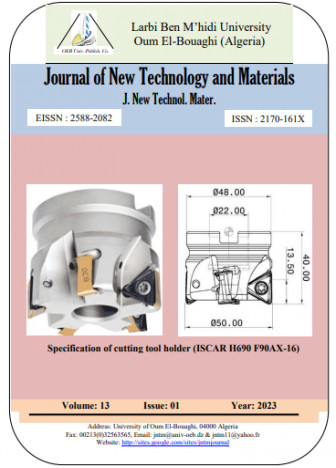Assessment of surface water quality in the Beni Haroun dam Algeria using X-ray fluorescence spectrometry after preconcentration
Keywords:
trace element, Beni Haroun dam, X-Ray Fluorescence (XRF, Limeston, ; Amebrlite XAD -7resin, principal component analysis (PCA).Abstract
X-ray fluorescence spectrometry after preconcentration of the water of Beni Haroun dam (BHD), Mila, Algeria. Has
carried out with two different methods which yielded the contents as following Na, Mg, Al, Si, P, S, Cl, K, Ca, Ti, V, Cr,
Mn, Fe, Ni, Cu, Zn, Ga, As, Se, Br, Rb, Sr, Y, Zr, Mo, Cd, Ba and Pb. The first method is preconcentration t evaporation
temperature (PET), this method based on the recovery of limestone, and it is simple and cheaper. Whereas the second
preconcentration method is based on the absorption of cations on Amberlite XAD -7 resin (AXAD-7R). The effect of
certain parameters such as pH, temperature, conductivity, Nitrate dosage, chemical oxygen demand (COD) and limit of
detection has been studied. The detection limits were reached for Na, Mg, Al, Si, P, S, Cl, K, Ca, Ti, Mn, Fe, Zn, As, Br,
Sr, Zr, In and Ba, during the four seasons of the year 2018. In this Water, the X-ray diffraction analysis showed the
existence of the following phases: Calcium Carbonate Hydrate: CaCO3 H2O, Sodium Chloride NaCl and silicon dioxide
SiO2. The principal component analysis (PCA) has been studied. The matrix of correlation between trace element and the
PCA indicates that they come from similar sources. This explains the anthropogenic contributions of agricultural pollution
by runoff water, discharges of domestic water and soil erosion. Regular monitoring of heavy metals in Beni Haroun dam
water has recommended avoiding any risk of excessive accumulation.





